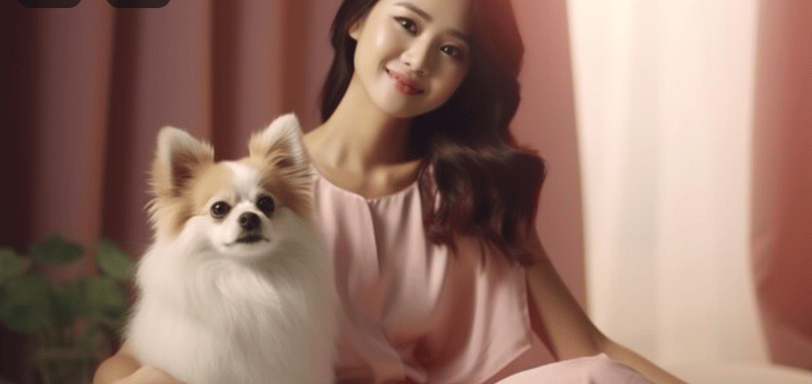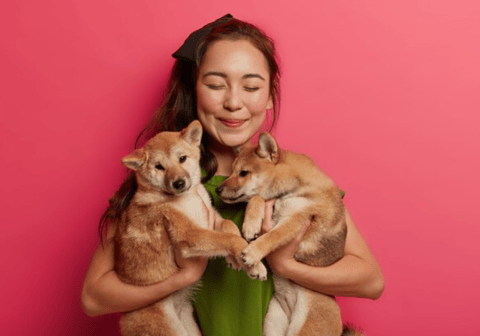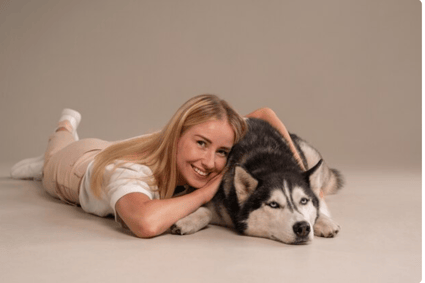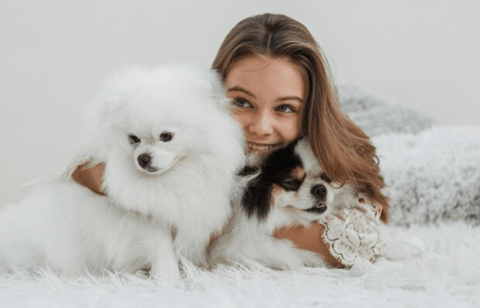
The Ultimate Guide to Puppy Training Tips and Tricks for Busy Owners: Simple Steps to a Happy, Obedient Dog
Welcome to the ultimate guide designed to help the bustling puppy owner navigate the rewarding journey of puppy training. In this comprehensive post, we’ll break down simple steps to achieving a happy and obedient dog, despite the constraints of a busy schedule. Grab a cozy seat, and let’s dive in!
FAMILY
4/28/20246 min read
I. Introduction
Bringing a new puppy into your home is an adventure filled with cuddles, play, and unexpected challenges. For the busy owner, training a puppy might seem like a daunting task that requires time you simply don't have. But fear not! We’ve crafted a guide full of practical tips and straightforward advice to fit puppy training into your hectic life, ensuring you and your furry friend enjoy a harmonious relationship from the get-go.
II. Understanding Your Puppy's Needs
First and foremost, understanding your puppy's needs is crucial. Puppies are bundles of energy, curiosity, and growing pains. They require patience, love, and a structured environment to thrive. Remember, every puppy is unique and understanding their individual personality and breed-specific needs is the first step in effective training.Transform Your Dog’s Behavior with One Simple Click! Find Out How!
III. The Importance of Consistency in Training
Consistency is key in puppy training. It's all about setting clear boundaries and sticking to them. Whether it’s meal times, potty breaks, or bedtimes, a consistent routine helps your puppy feel secure and understand what's expected of them.
IV. Setting Realistic Goals for You and Your Puppy
“Setting realistic goals is not about lowering your expectations but about celebrating small victories.”
It’s important to set achievable goals based on your puppy's age, breed, and temperament. Remember, progress is progress, no matter how small.
V. Establishing a Routine
Consistency and routine go hand-in-hand. Establishing a daily routine for feeding, exercise, and sleep is pivotal for your puppy’s development. This structure not only helps with training but also with reducing anxiety and behavioural issues.
1. Feeding Times and Diet Management
Regular feeding times contribute to a stable routine. It’s also essential to choose the right diet for your puppy’s age, size, and breed to ensure they’re getting the nutrients they need to grow healthy and strong.
2. Exercise and Play: Finding the Right Balance
Finding the balance between exercise and play is vital. While puppies have a lot of energy, it’s important not to overdo it. Short, frequent play sessions throughout the day are a great way to keep them stimulated and burn off energy.
3. Sleep Schedule: Ensuring Your Puppy Gets Adequate Rest
Puppies need a lot of sleep. Ensuring your puppy has a comfortable, quiet place to rest is important for their development. A tired puppy is a grumpy puppy, and adequate rest is crucial for a successful training regime.
How to Train Your Dog Like a Pro in Just Days! Click to Discover!
VI. Basic Training Techniques
When it comes to training, the basics are the foundation of a well-behaved dog.
1. House Training: Crate Training and Signals for Going Outside
House training is often the first challenge. Crate training can be a helpful tool, providing your puppy with a safe space and aiding in controlling their environment. Observing and learning the signals your puppy gives when needing to go outside is also critical.
2. Basic Commands: Sit, Stay, Come
Teaching basic commands such as sit, stay, and come not only provides your puppy with structure but also strengthens your bond. Keep training sessions short, fun, and rewarding.
3. Leash Training: Walking Without Pulling
Leash training is essential for safety and comfort during walks. Start in a quiet environment and gradually introduce distractions as your puppy becomes more comfortable and responsive to commands.
How to Train Your Dog Like a Pro in Just Days! Click to Discover!
VI. Socialization and Behavior
Socialization is about more than just playing with other dogs. It’s about exposing your puppy to a variety of environments, people, and situations in a controlled and safe manner.
1. Introducing Your Puppy to New People and Pets
Introductions should be gradual and positive. Always monitor interactions closely and be ready to intervene if necessary.
2. Curbing Unwanted Behaviors: Biting, Barking, and Jumping
Unwanted behaviors can be challenging. Early intervention using positive reinforcement and redirection strategies can prevent these behaviors from becoming ingrained habits.
3. Positive Reinforcement: Rewards and Praise
Positive reinforcement is the most effective training method. Rewards and praise not only encourage good behavior but also strengthen the bond between you and your puppy.
VII. Health, Nutrition, and Wellness
A healthy puppy is a happy puppy. Paying attention to health, nutrition, and wellness is just as important as behavioral training.
1. Choosing the Right Food for Your Growing Puppy
The right food supports your puppy’s growth and development. Consult with your vet to choose a diet that’s tailored to your puppy’s specific needs.
2. Vaccinations and Regular Vet Visits
Regular vet visits and staying up to date with vaccinations are crucial for your puppy’s health. These visits are also an excellent opportunity to discuss any concerns or questions about your puppy’s development and training.
3. The Importance of Mental Stimulation and Environmental Enrichment
Mental stimulation and environmental enrichment are vital for a well-rounded puppy. Toys, games, and training challenges can keep their minds active and reduce boredom-related behaviors.
Revealed! The Training Secret to Make Your Dog a Genius! Access Here Now!
VIII. Advanced Training and Activities
As your puppy masters the basics, you can introduce more advanced training and fun activities to keep them engaged and challenged.
1. Fun Tricks and Games to Strengthen Your Bond
Learning tricks or playing new games together can be a fun way to strengthen your bond and keep your puppy’s mind sharp.
2. Agility Training and Sports for Dogs
For the more adventurous, agility training and dog sports can provide excellent physical and mental exercise and are a fun way to spend quality time together.
3. Continuing Education: Obedience Classes and Beyond
Never stop learning! Obedience classes, workshops, and training clubs can offer continued education for you and your puppy, no matter their age or stage in training.
IX.Technology and Puppy Training
1. Apps and Gadgets: Simplifying Your Routine
Technology can be a great ally in puppy training. Apps for reminders, training tips, or tracking your puppy’s progress, along with gadgets like cameras and automatic feeders, can simplify your routine.
2. Online Resources for Training Tips and Advice
Online resources are invaluable for busy owners. From forums and blogs to online courses, there’s a wealth of information and community support available at your fingertips.
3. The Role of Cameras and Monitors in Safety and Training
Cameras and monitors can be useful tools for observing your puppy’s behavior when you’re not home and ensuring they’re safe and sound.
Shhh… Don’t Tell the Dog Whisperer We Shared This Site with You! Click Here to Access Official Webiste for Dogs Trainings
Summary and Key Takeaways
Congratulations! You’ve just taken a whirlwind tour of puppy training tips and tricks tailored for the busy owner. Remember, at the heart of effective puppy training is understanding, patience, consistency, and love. With the right approach and mindset, you can foster a happy, healthy, and obedient companion, even amidst a hectic lifestyle.
FAQs
How long does it take to train a puppy?
Training a puppy is an ongoing process that varies greatly depending on the individual dog, but basic training often takes several months.
Can old dogs learn new tricks, or is there a cutoff age for training?
Absolutely, dogs of any age can learn new things. The key is adapting the training to match their learning pace and physical abilities.
How can I train my puppy if I'm not home all day?
Utilizing technology, establishing a routine, and possibly enlisting the help of a pet sitter or dog walker can keep your puppy on track with their training.
What are the signs my puppy is overworked or stressed during training?
Signs include avoidance behaviors, excessive panting, drooling, or showing signs of aggression. Always keep training sessions short, positive, and fun.
How often should I feed my puppy, and does it affect training?
Puppies typically eat three to four times a day. Feeding them at the same times each day helps with routine and can aid in training efforts.
There you have it, from the essentials of training to integrating technology into your routine, we’ve covered everything you need to know to start off on the right paw. Remember, the key to successful puppy training is patience, consistency, and lots of love. Your puppy is learning every day, and so can you. Together, you'll navigate the challenges and joys of puppyhood. Here’s to the beginning of a wonderful journey with your new best friend!
Shhh… Don’t Tell the Dog Whisperer We Shared This Site with You! Click Here to Access Official Webiste for Dogs Trainings
Connect
info@graciebusiness.com












